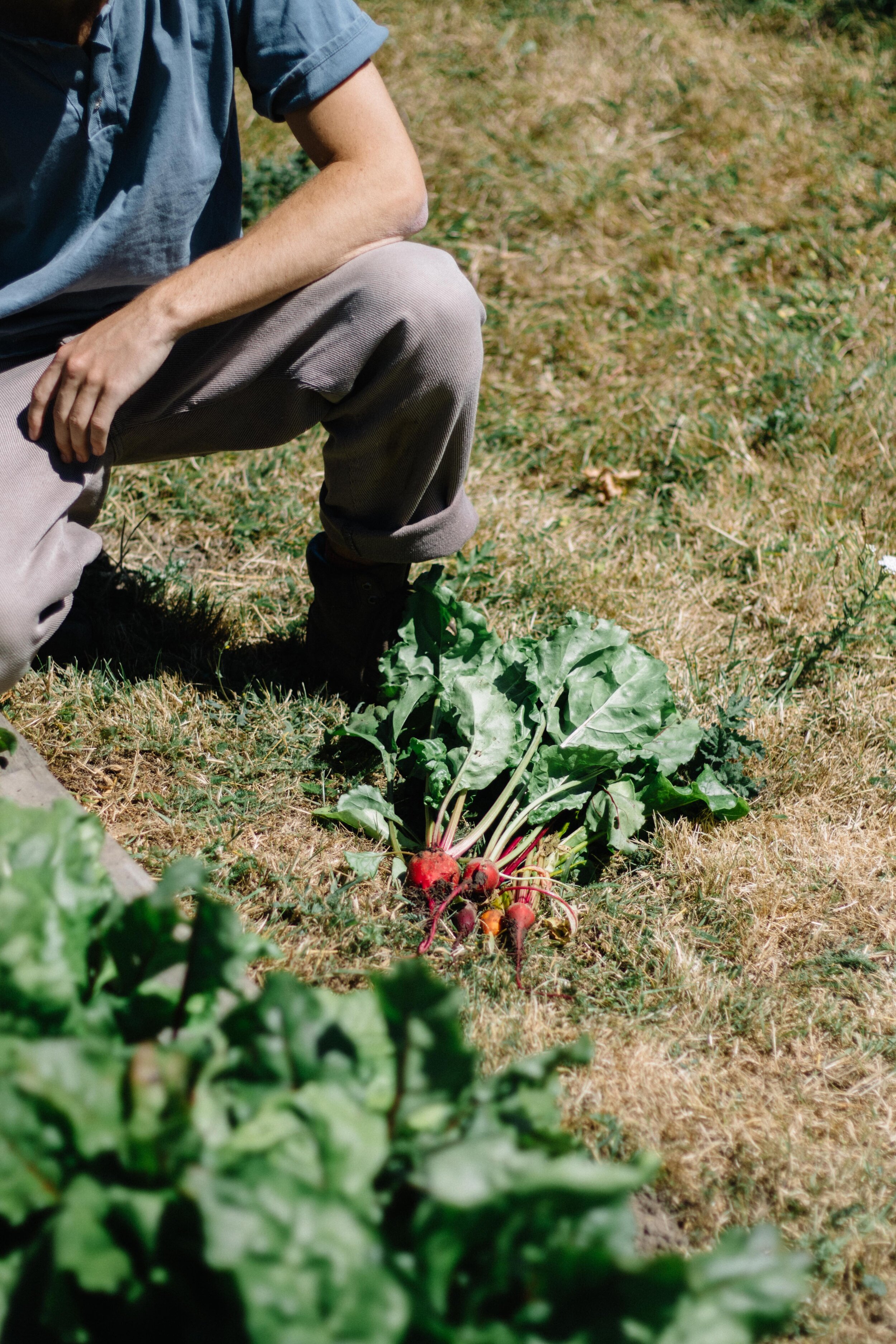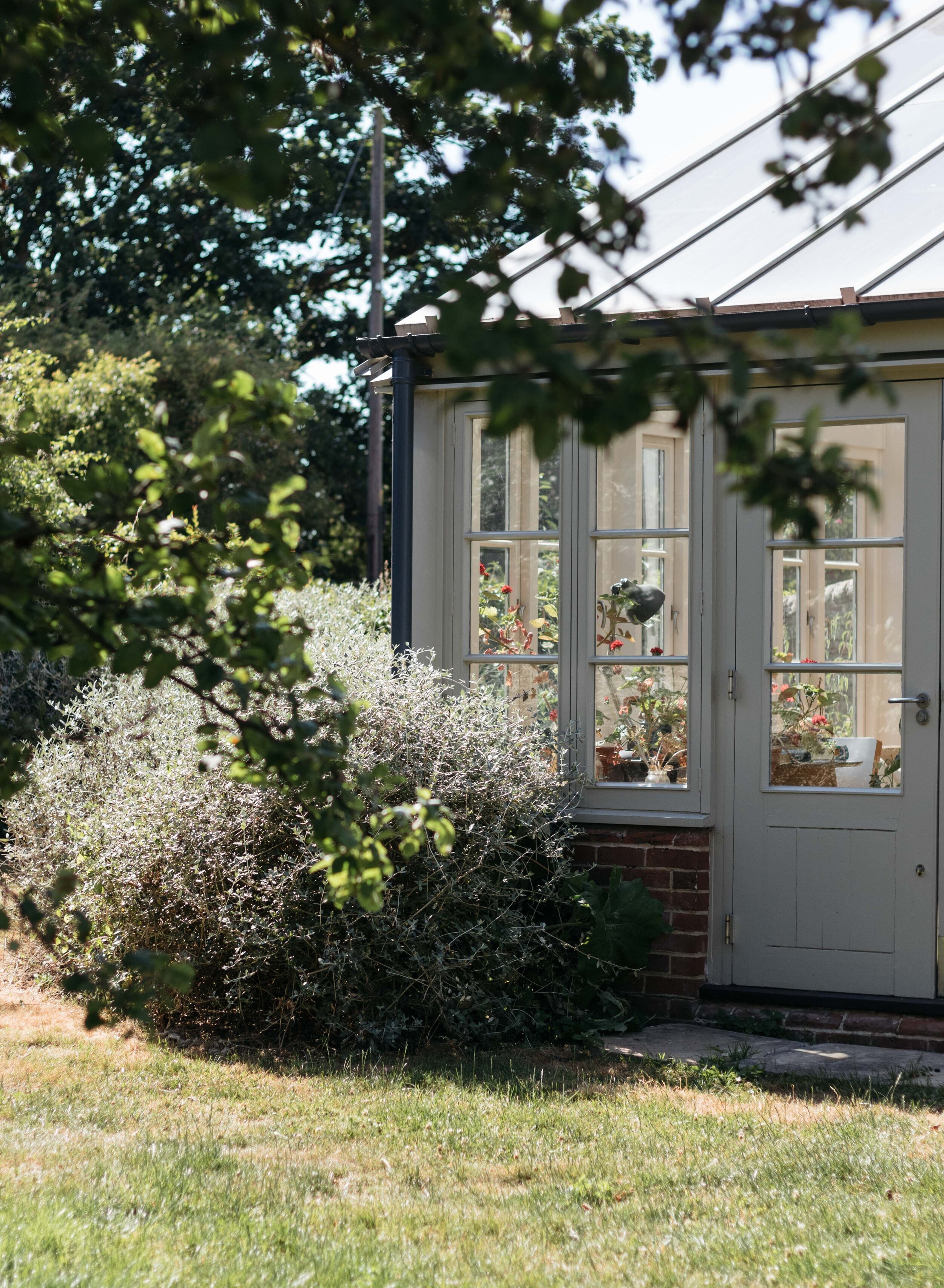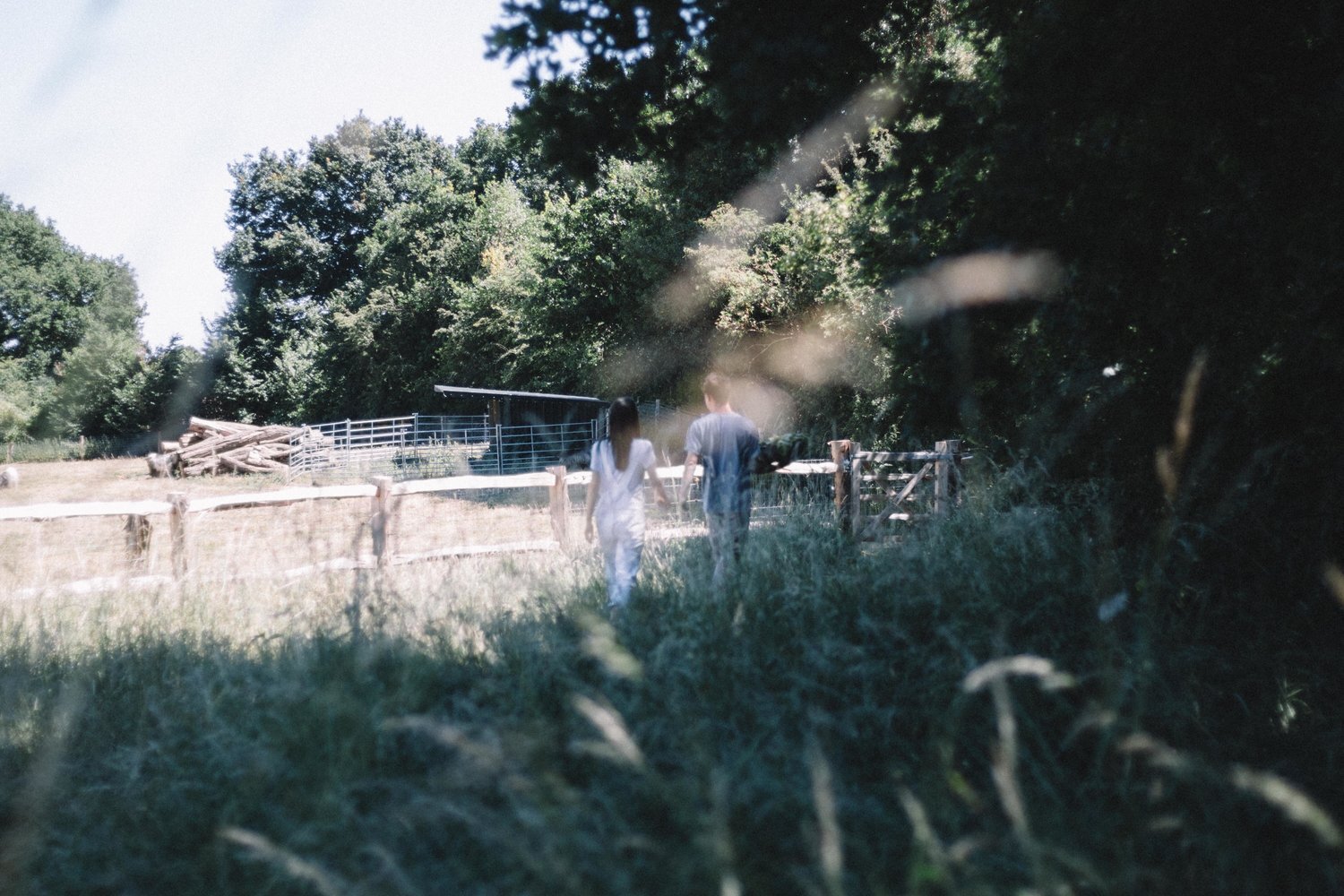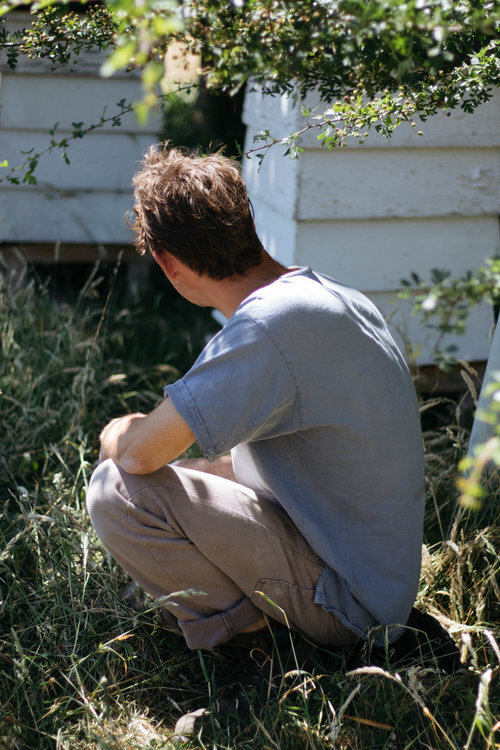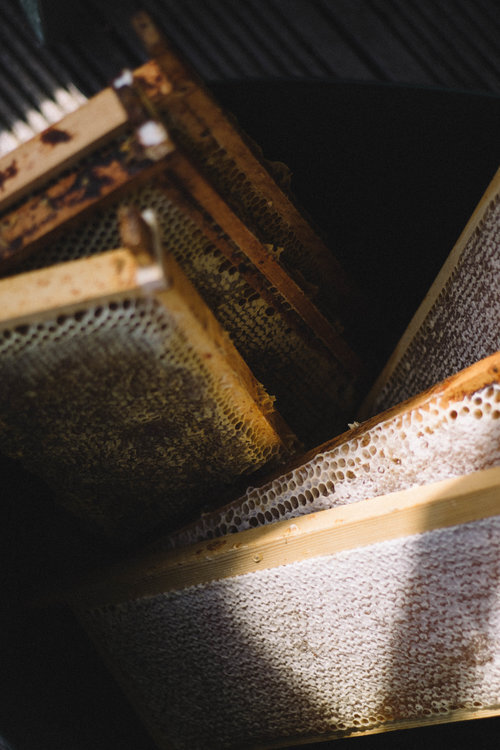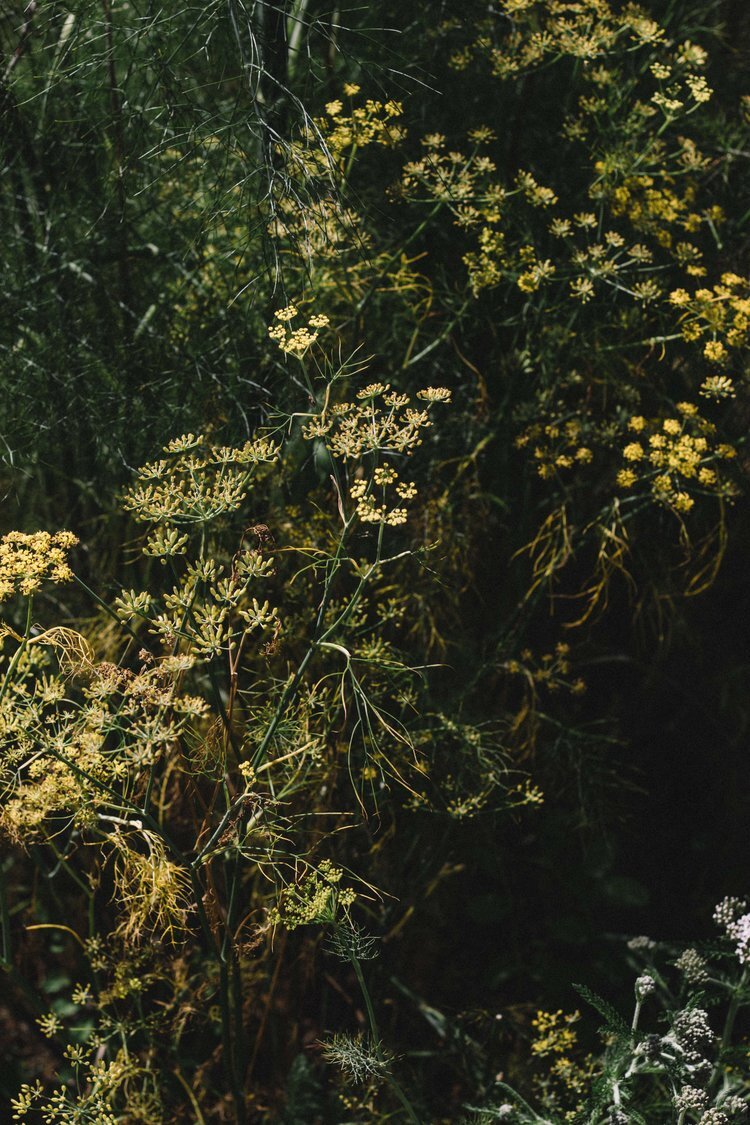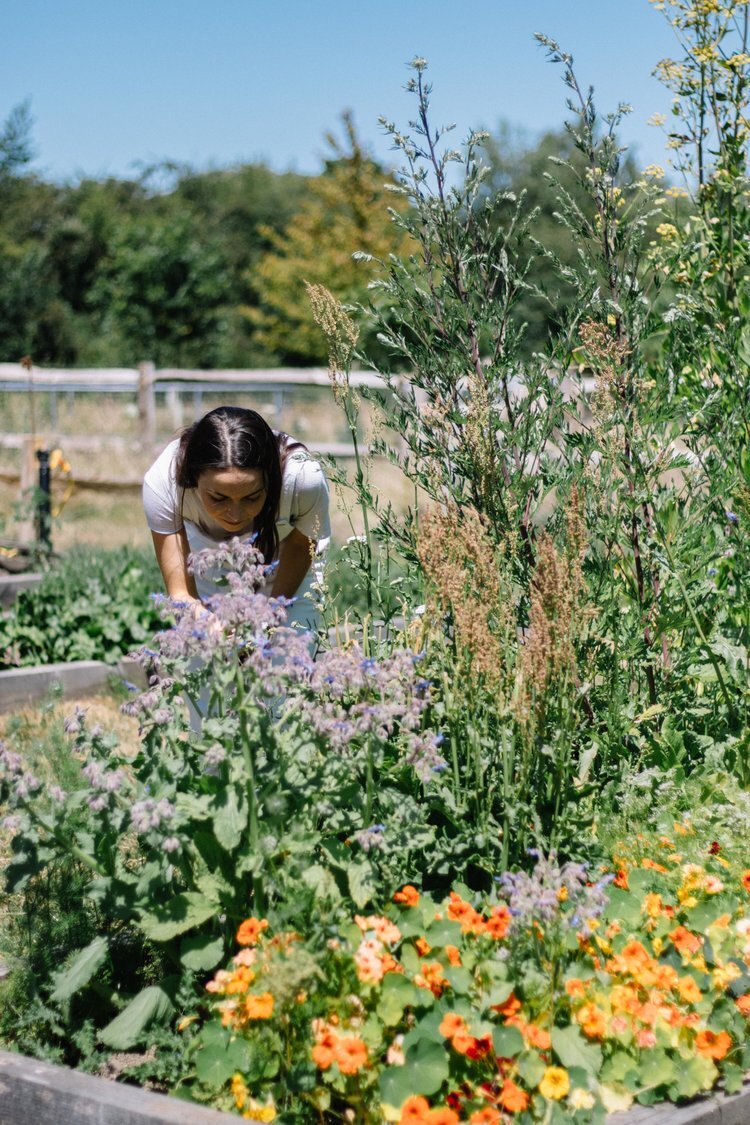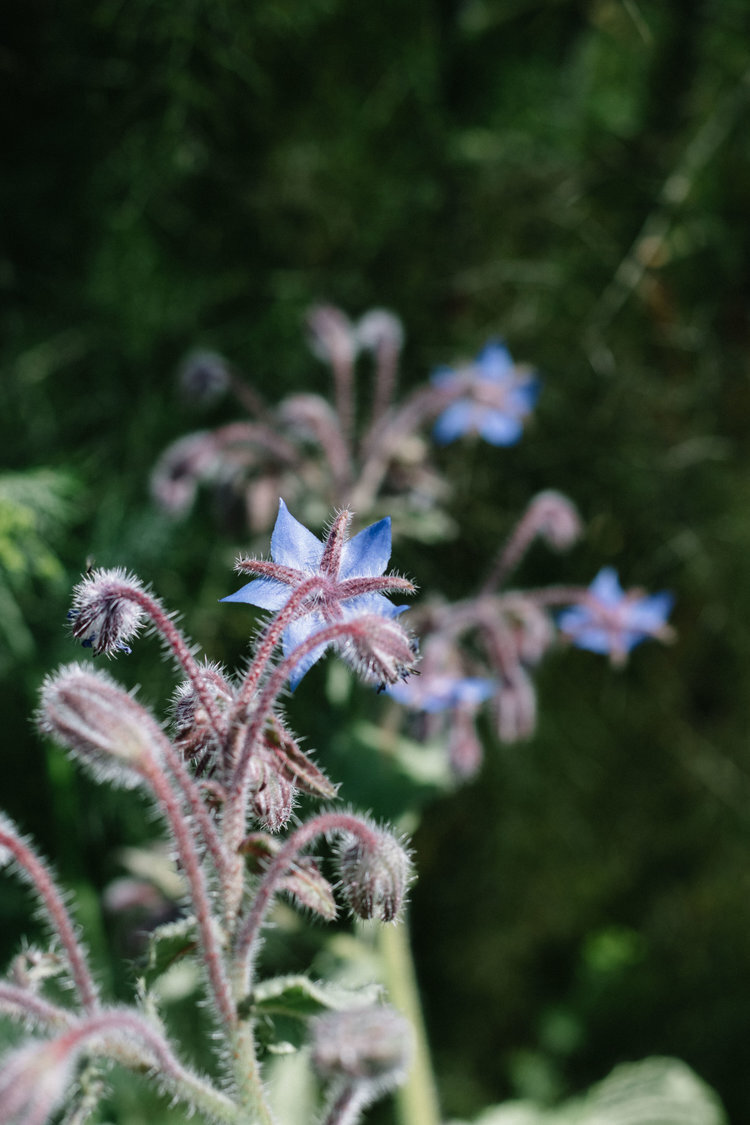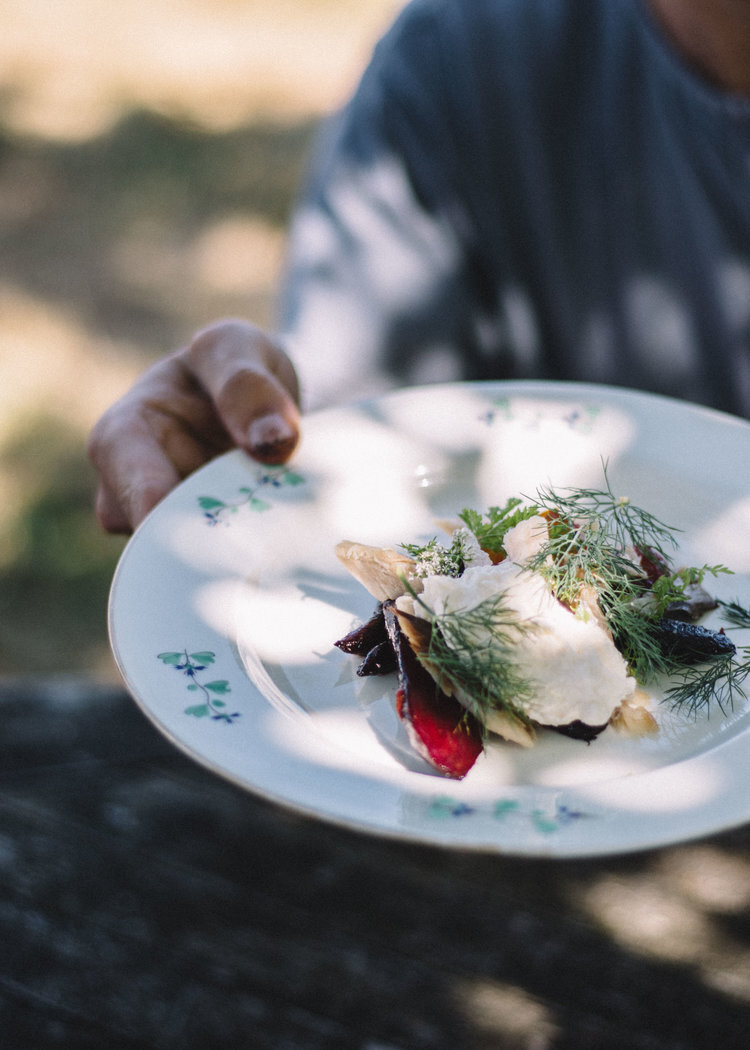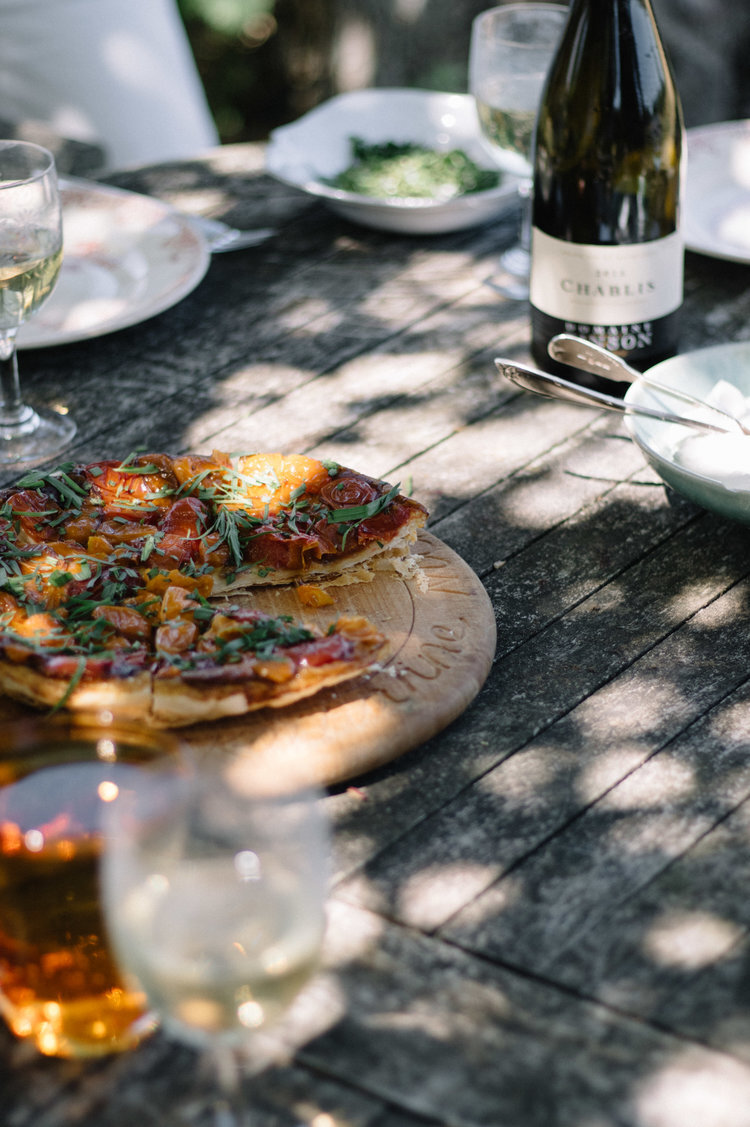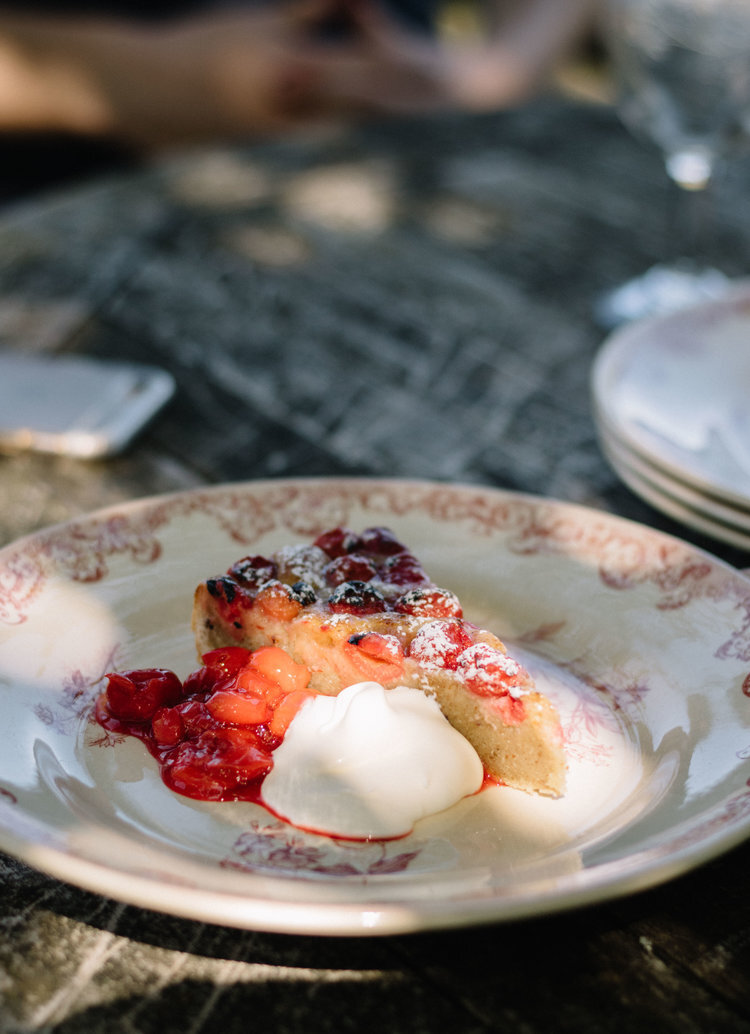An Interview with Julius Roberts
Words by Olivia Williamson
Photography by Ariana Ruth
Recipe by Julius Roberts
It takes some kind of person to start a farm out of curiosity. Just a few months earlier, Julius Roberts had been working as a chef in London and before he knew it he was frantically chasing escaped goats around a field in Suffolk.
This wasn’t something that happened by default. He doesn’t come from a line of farmers; his family still live in London, where he grew up before moving to Brighton to study sculpture. Now, aged 25, he lives alone as a fully-fledged, self-taught, first-generation farmer. Well, not quite alone. Julius is the proud owner of four pigs, 17 goats, 15 Hebridean sheep, two dogs and a set of chickens (before the fox got to them, that is) that keep him busy but very entertained. So how did this all happen?
After university, Julius returned to London facing the same dilemma of every graduate, stumped at what to do next. Not sure he could see himself pursuing life as an artist, he got a job at a restaurant down the road, working his way up from commis very quickly. When the manager moved to Noble Rot he took Julius with him. The 8 months that followed were a “baptism of fire - intense, stressful and enlightening.” Given that the restaurant was in its infancy, Julius was working in a skeleton team, doing non-stop 18-hour shifts in a sweltering 45-degree basement. “It takes every ounce of energy you have. It did put me off cheffing professionally because it’s so much of a sacrifice but the team spirit was amazing. I learnt more about cooking there in 8 months than I did in 10 years at home and I’ll always regret not staying longer.”
His time at Noble Rot was, however, hugely inspiring. Working alongside chefs with a deep respect for the quality of ingredients rubbed off on him and so began his own passion for produce that is so central to what he does today. He left London in 2016 to start the journey towards self-sufficiency, diving headfirst into farming and learning the ins and outs as he went, through trial and error. It wasn’t long before he was hooked.
If you follow Julius on social media, you probably feel as if you know him already. He’s an avid Instagram Story-teller, giving his followers a glimpse into what life is like on a farm as he feeds the pigs, checks on the goats and walks his two lurchers, Loki and Zephyr. We watch our screens as he walks us through a new recipe, step-by-step, using fresh vegetables from the garden that he’s picked just five minutes earlier. We listen intently, discovering the names of obscure herbs, learning how to cut a goat’s toenails and what a Mangalitza pig is (a pig so hairy it needs to be seen to be believed). Essentially, you’re getting a lesson on cooking, gardening and farming rolled into a series of informative but lighthearted 15-second clips whilst you sit at home. Unlike the dreaded guilt that looms from mindlessly scrolling through Instagram, you actually feel pretty good about yourself for picking up a new fun fact or two. Was this the plan? “It wasn’t initially, but when you start getting into it it’s impossible to not feel some responsibility. Now, 100% the mission is to educate and I’m using Instagram Stories to do that as much as possible.” A millennial farmer, indeed.
“People build this intimate relationship with the animals so sometimes it’s hard to know how much to share. Farming has a harsh and gritty side to it.”
While Julius tries to be as honest as he can on social media, there is one thing he hasn’t felt ready to discuss yet. “People build this intimate relationship with the animals so sometimes it’s hard to know how much to share. Farming has a harsh and gritty side to it.”
He’s tested the waters, from filming the lead up to the birth of a kid in the depths of winter to taking us through the castration process of a goat, but, so far, he’s drawn the line at the slaughterhouse. He himself finds it extremely difficult:
“I’ll never forget my first visit to the local, family-run abattoir. I was shell-shocked and silent in the car home. It hit me like a train. But seeing how kindly and humanely it could be done, when done right, really affirmed things for me – they’re skinned, gutted and ready within five minutes. They’ve lived an incredibly healthy and happy life outdoors and haven’t been pumped full of bad food and antibiotics. I was relieved by how fast and efficient it was - so far from the appalling commercial slaughterhouses where herds upon herds of animals wait in line to meet their in-humane end, after a life of factory farming. The owner put it simply when he said ‘it doesn’t cost more to be kind’, something I’ve carried with me ever since.”
And so, of course, this leads us to talking about the meat industry as a whole; a deep, complex topic that Julius feels so strongly about. “I wish there was more education in schools. Everyone should have to bring up an animal - it’s enlightening and the only way to really understand the injustice of the disrespectful consumer culture that we’re living in. Animals are just as intelligent as we are in their own way. They form friendships, loyalties and have amazingly individual characters. It’s amazing but terrifying at the same time”. We talk about the lack of knowledge, how many people don’t know what lamb is (quote Love Island contestant “is beef the same as lamb?”) and how there is such a disassociation with what’s on our plates and where it comes from.
Arguing against those that claim you can’t love animals if you eat them, Julius is adamant that you have to love them more. It’s about the way in which you choose to eat meat - “little and rarely” in his case and with a lot more consideration for where it’s come from. Instead of wolfing down kilos of perfect chicken fillets wrapped in pretty plastic packaging, Julius wants us to return to the times when a whole bird would feed a family for three days using every inch of the meat and all of the bones in nourishing stews and stocks. “Half of the animals that are killed for human consumption end up in the bin or used for dog food. We should be eating the whole animal – pig’s tails, livers, all of the grizzly bits. Not only is it healthy and delicious but it’s a way of showing respect.”
We move on to the veg garden where we’re introduced to a host of herbs and plants, tasting each one as we go and given a run down of the weird and wonderful ways to use them. Smoking fish with dried fennel stalks, tempura-ing borage and steeping blackcurrant leaves to make ice cream. This is where the chef in Julius comes out and his excitement and enthusiasm is quite infectious. He tugs out a bunch of beetroot – pink, yellow and purple. “Look at those colours!” he marvels. Surely seeing this everyday makes it less exciting? Not for Julius, it seems. After a quick photo for ‘The Gram’, he wraps them in foil and throws them on to the open BBQ pit (that he fashioned himself, naturally). In a few hours they’ll be lunch.
We walk down to meet the pigs - Snap, Crackle, Pop and Alby - and to say hi to the goats who are too busy frolicking around in the sun to care. We walk back towards the house to eat under the shade of the apple tree, joined by his two younger brothers and chief animal-sitters, Joss and Lucian. On the menu: tomato tarte tatin, those beetroots with smoked fish and creamed horseradish and slices of cherry frangipan tart to finish.
If it all sounds a bit too idyllic, that’s because is it. While we were there, enjoying a nice day out of London, this is his norm. But it’s not always like this. The life of a farmer is defined by the seasons so, whilst the summer days are slow and tranquil, winter is a lot more intense, consisting of constant feeding and checking on the animals and battling against the harsh weather. Nursing a goat through birth for the first time during the Beast from the East was testing to say the least.
So what’s next for Julius? Where does he want to take this?
We leave with plenty of food-for-thought (as well as jars of honey from his bees and a bag chock-full of herbs). Julius has certainly found his calling and is turning the farmer’s stereotype on its head. Nowadays, with social media so central to our lives, he’s using it for good; inadvertently taking on the role of educator and campaigner without ever sounding preachy or patronising.
There’s a book in the pipeline that will read like the diary of a farmer, educating us about the animals, the processes and delving into the issues we’d touched on that day. Of course, it will be dotted with seasonal recipes that put vegetables centre stage and, I imagine, will be laden with the bright and cheery photography we’re all so familiar with from his Instagram.
A TV show is another idea and would seem like an obvious step given how natural he is in front of a camera. By bringing us on his journey each day, he’s making that world feel a little less distant, bridging the gap between the source and what ends up on our plates and making us consider if there’s a better, more conscientious way to go about things.
Julius' Recipe for Morello Cherry and Frangipani Cake
This is my cake of choice for making the most of seasonal fruit. In spring, think gooseberries and elderflower but, come summer, I love the delights of apricots, wild raspberries and currants. Autumn is the time for greengages, damsons and blackberries, whilst pears spiced with cinnamon, star anise and allspice are immensely comforting during the winter months.
In the height of summer, when the sour Morello cherry trees hang low in the garden, heavy with plump fruit, I can’t help but throw them in a cake. The birds particularly love these cherries, so I tend to pick them all at once and leave them covered in the fridge, soaking them in some Kirsch (cherry liqueur) and a bit of sugar which preserves them for a little longer. This also gives the cake a punchy kick, just be careful not to add too much of the juice whilst baking otherwise you’ll end up with a gooey mess.
This cake takes minutes to put together and, as it’s all done in a food processor, there is very little washing up. I love to serve slices with some crème fraîche and a compote made from the same fruit (recipe below). Feel free to experiment with this - I once did a cinnamon and pear version served with Greek yoghurt mixed with a little damson purée and it went down a storm.
Ingredients
Serves 8
For the cake:
125 almonds (freshly ground if possible, they have a far better texture and flavour)
120g caster sugar
140g unsalted butter + extra for greasing
3 medium eggs
1 heaped tsp of baking powder
80g plain white flour
Zest of a large unwaxed lemon
A few drops of almond essence (be careful with this, it’s very strong)
Approx. 300g of Morello cherries or whichever seasonal fruit you’re using, stones removed
(Note: these stones should never be thrown away as they are absolutely packed with flavour. They are great for flavouring vinegars, making sorbets or for boiling in syrup to then ferment in Kombucha.)
For the compote (optional):
500g of stoned cherries or other fruit, tops and tails removed if necessary
Sugar to taste
Approx. 50ml fruity alcohol, cordial or water
Instructions
Preheat oven to 180 degrees (fan oven). Butter the base and sides of a 20cm spring-form cake tin and line with baking parchment.
Start by blitzing the almonds in a food processor. Blitz for a few minutes until you have a fine crumb, if it’s too coarse it will hinder the rise of your cake. Pour the ground almonds into a bowl and set to one side.
Add the caster sugar and butter to the food processor and blitz until pale and fluffy. You may need to scrape down the sides with a spatula as you go, depending on the size of your food processor’s bowl.
With the machine running, add the eggs one at a time, taking care not to curdle the mixture.
Next, add the ground almonds, followed by the baking powder and flour. Once combined add the lemon zest and almond essence. (When using gooseberries, I like to add a splash of elderflower cordial here, about 50g. However, if you do this, reduce the sugar to 100g otherwise it will become too sweet.)
Pour the cake mixture into your prepared tin and tap the tin lightly on the kitchen counter so that it spreads out evenly. Very liberally top with the cherries (or other fruit), pressing many of them down to the bottom of the tin so the cake mixture envelops them. You want to make sure that with each mouthful of cake there is at least one cherry.
Bake in the middle of the oven for roughly 30 minutes, until golden. To test if it’s ready, insert a skewer and it should come out clean. Remove from the oven and set aside to cool for a few minutes before removing from the tin.
Whilst the cake cooks, make the fruit compote. Add the cherries to a pan, sprinkle with some sugar and cook gently until they start to break down and release their juices. Add a splash of fruity alcohol (I like Madeira), cordial or water and simmer until the sauce thickens slightly, roughly 10 minutes. Taste and see if it needs more sugar.
Serve slices of the cake topped with spoonfuls of warm compote and a dollop of crème fraîche.

